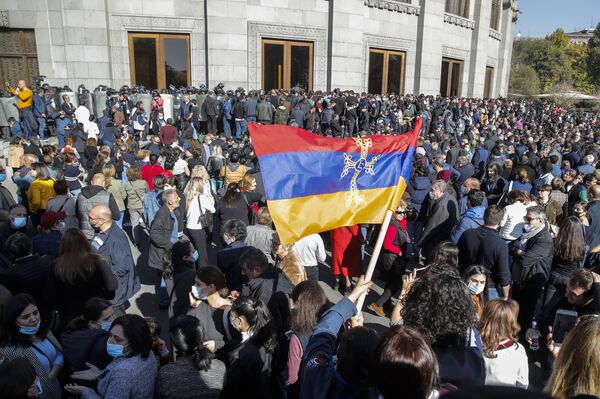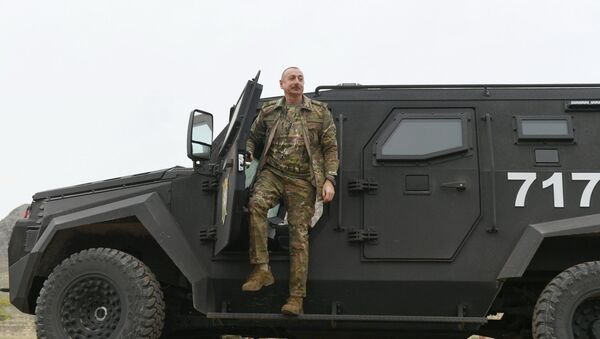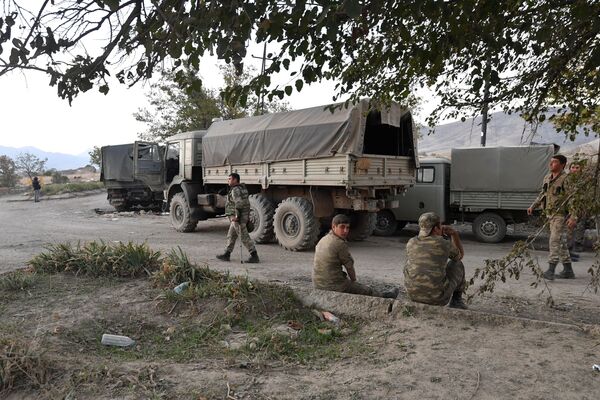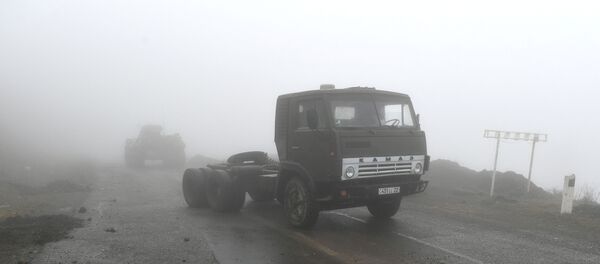The three-sided Russian-Azerbaijani-Armenian agreement on ceasing hostilities in Nagorno-Karabakh is fully consistent with Azerbaijan’s interests, and Baku considers the conflict to be ‘behind it’, President Ilham Aliyev has said.
“After [the signing of the ceasefire] we will accelerate the path of our development. We have achieved our goals on the battlefield. Our soldiers and officers have shown their strength. We have shown our strength in the political arena, and the trilateral statement fully meets our interests,” Aliyev said in an address to the nation on Friday.
“The Armenian-Azerbaijani Nagorno-Karabakh conflict is behind us. This is something international experts also note. Azerbaijan, having achieved a spectacular victory on the battlefield, achieved its goal in the political arena,” the Azerbaijani president added.
Declaring that a ‘military solution’ to the conflict in Karabakh was Azerbaijan’s right under international law, Aliyev said Baku is now ready to rebuild normalised relations with Yerevan, provided the presence of ‘healthy forces’ there.
“We tried to resolve this issue by political means for many years. But the entire world saw that Armenia’s position made this question impossible to resolve, and a military solution was our right. This right is recognised by international norms and principles. This right was provided to us via United Nations resolutions. Every country has the right to defend itself, and we too defended ourselves,” Aliyev said.
“Today, Armenia is facing an internal crisis. This is natural. Because a military defeat, and such a shameful one, cannot but lead to unrest in any country. Therefore, certainly, if sensible forces come to power after the end of this crisis, we will be ready to establish normal relations with these forces,” he said.

According to Aliyev, Baku is interested to seeing an end to all hostilities in the South Caucasus, and for the establishment of normal, business-like relations between countries in the region. “During the war I said and will say again that we do not have any problems with the Armenian people. We did not carry out ethnic cleansing against the Armenian people as they did against us. We did not destroy their historic monuments, we protect them and, as you know, took important steps in connection with this issue,” he said.
The Azerbaijani president also challenged the Armenian side’s claims that about 90,000 Armenian refugees had entered the country from Nagorno-Karabakh, saying their maximum number was 65,000 people.
Territorial Transfers
Commenting on the transfer of the Agdam district, which was occupied by Armenian forces for over 25 years following the First Nagorno-Karabakh War, back to Azerbaijan’s control, Aliyev congratulated the region’s residents, saying they would no longer be refugees.
According to Aliyev, before the start of any infrastructure projects in the returned territories, Azerbaijan will need to carry out work to demine the territories.
Ceasefire Marks Tenth Day
Aliyev made his address on the ten-day anniversary of the signing of the Russia-facilitated Nagorno-Karabakh ceasefire agreement between Azerbaijan and Armenia. The document, signed November 10 by Russian President Vladimir Putin, Azerbaijan’s President Aliyev and Armenian Prime Minister Nikol Pashinyan, was agreed umpon after nearly a month-and-a-half of brutal fighting between Azerbaijani and Armenian forces in Karabakh and the adjacent regions.
The agreement commits both sides to an immediate halt to fighting, an exchange of prisoners, and the departure of Armenian forces from Karabakh-adjacent regions, as well as the deployment of 1,960 Russian peacekeepers to separate the two sides.
The Azerbaijani-Armenian dispute over Nagorno-Karabakh began in the late 1980s, when nationalist sentiments unleashed by Mikhail Gorbachev’s perestroika prompted residents in the ethnic Armenian-majority territory to attempt to break the autonomous territory off from Soviet Azerbaijan and transfer it to Soviet Armenia. Baku sought to stop this. In the early 1990s, the two sides fought a war for control of the region, leading to the death of over 30,000 people and the displacement of over 1.1 million more. Thousands of soldiers and civilians have been killed in flare-ups since then.





